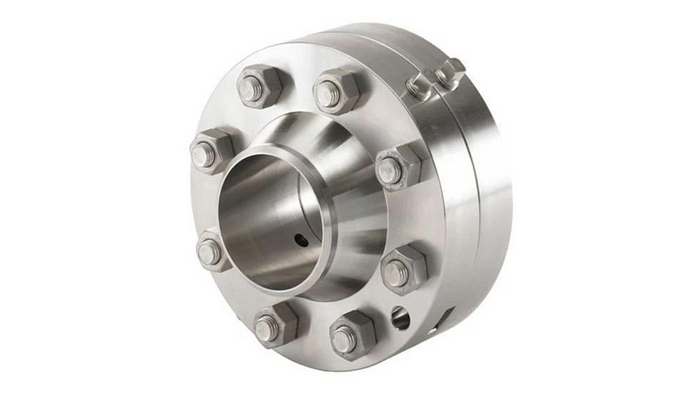Understanding The Basics: What Is An Orifice Flange?
Are you curious about those metal rings with holes you see in industrial settings? Wonder no more! Orifice flanges may seem mysterious, but they’re crucial components in many industries.
Simply put, they’re specialized fittings used to measure and control fluid flow. From oil refineries to chemical plants, orifice flanges are vital in ensuring smooth operations.
In this guide, we’ll unravel the basics of orifice flanges in a way that’s easy to understand.

Get ready to dive into the world of flanges and discover their significance in industrial applications!
What Are Orifice Flanges?
Think to yourself: you’re the engineer of water flow all the way through the pipe. You need a valve to do this. However, how do you measure the water flow as well? This is where the orifice flanges do their job.
The orifice flange is like special fittings that connect to pipes. It has a small hole in the center named the orifice. This entrance allows for measuring the flow of air or water in the pipeline.
Purpose of Orifice Flanges
Orifice flanges are acting as the detectives of the piping world. They tell us about the amount of flow at one given time. This is essential in fields such as oil and gas, and the knowledge of which fuel volumes are flowing is the winning factor of a project.
Think of it like this: if you’re driving a car, you should know how much fuel remains in the gas tank. Orifice flanges enable us to monitor the “fuel state” of industrial operations.
Key Components of an Orifice Flange Assembly
Being familiar with orifice flanges’ vital components provides invaluable knowledge regarding the issues. These elements constitute the engine of an orifice flange assembly, which enables it to operate efficiently and accurately when measuring fluid flow. Here are the main components you need to know:
- Orifice Plate: This part of the assembly is a pinch point in the cross-section and serves to measure the flow rate of the medium accurately.
- Flange Assembly: The assembly of bolts and gaskets constitutes a flange, which seals the orifice plate in the given location and prevents leaks.
- Flow Taps: These are the openings that are placed on the flange in order to supply the link to the instrumentation needed for the measurement of the flow.
Mastering these critical parts not only ensures dependability but also the precision of the measurement system.
Sizing and Installation Considerations
In orifice flange sizing and installation, it differs from getting it right to doing it right. Proper sizing ensures optimum flow measurement precision and rates.
Factors such as type of fluid, pressure, and flow rate determine the proper orifice plate and flange size. Apart from that, putting in the orifice flanges is also important as it prevents leaks and increases reliability.
Observing the installation best practices will positively affect the performance of the system as well as its life expectancy. By knowing the sizing and installation considerations, you can speed up your industrial processes and raise productivity with no errors in the general process.
Common Challenges and Solutions
Knowing orifice flanges can be difficult, but not at all! We’re available to troubleshoot some basic problems and give quick solutions. Recognizing the issues and what exactly to put in place or how to fix the problems they arise is key for the smooth running of the industries.
Let’s quickly go through them:
- Installation Woes: Make sure the bolts are tight as you line them up.
- Leakage Concerns: The right choice of bolts and good sealing methods are effective measures against annoying leaks.
- Flow Disruptions: Adjusting valves with flow taps and plate breakers ensures a smooth flow.
Expert tips are coming soon to help you with those issues.
Standards and Regulations
Just like laws for driving on the street, rules for orifice flanges are also there. The guidelines that the ASME and API set are to ensure that things are going smoothly and safely.
Maintenance and Inspection
Regular inspection of orifice flange protection is key to smooth and secure processes at work. Here are some key points to consider:
- Regular Checks: Occasionally check orifice flanges for indications of wear, corrosion, or leakage.
- Proper Cleaning: Keep joints and parts free of debris to avoid clogging and preserve performance.
- Scheduled Maintenance: Follow a maintenance schedule to replace or repair worn-out parts as directed accordingly.
- Professional Inspection: Apply qualified technicians for in-depth checks and standards all over the industry.
- Documentation: Take down detailed records for all maintenance and inspection activities for future reference and compliance.
These practices will enable you to keep your gear and ensure the equipment is operationally intact for a long time.
Conclusion
Learning the fundamentals of the orifice flanges is essential for industry-related employees. Identifying their function, parts, and installation will always result in a good and accurate flow measurement.
You can make efficiency more efficient and reduce downtime by keeping standards and regular maintenance. Whether you are in the oil and gas industry, chemical and manufacturing, orifice flange knowledge makes it possible for you to make the right decisions and observe safety requirements.
Continue looking for new ideas and always remain current on best practices for your job. Orifice flanges might appear complex, but you ought to be thorough, and you will handle them with ease.
